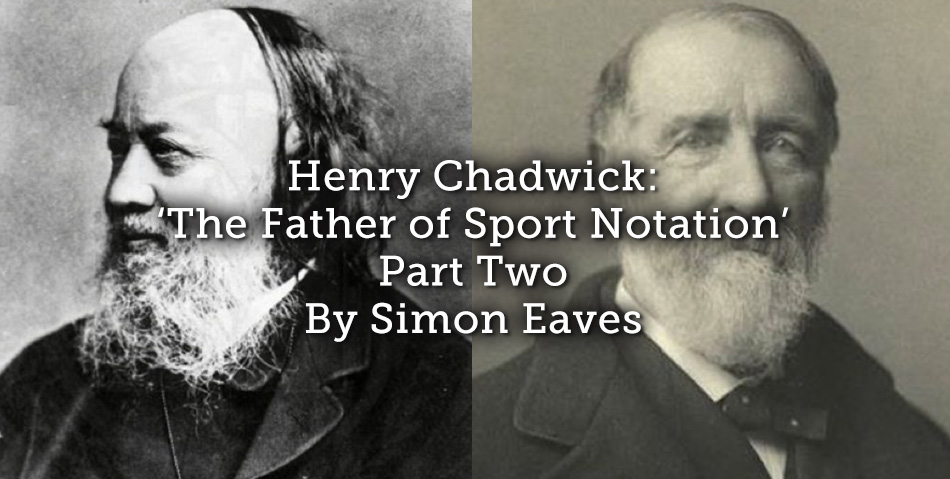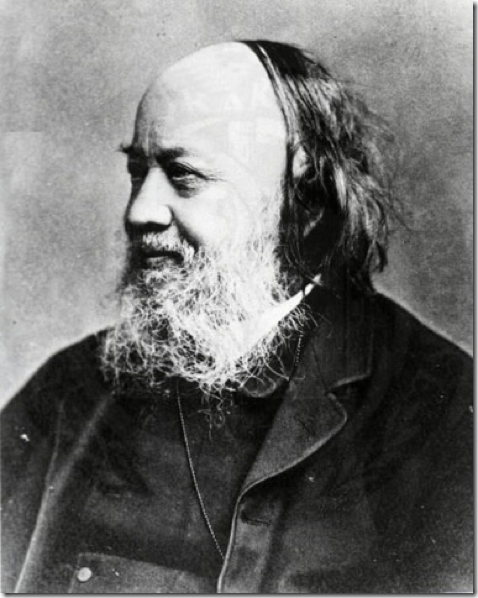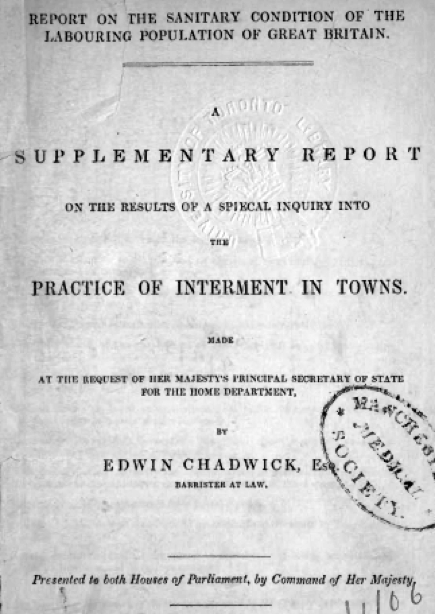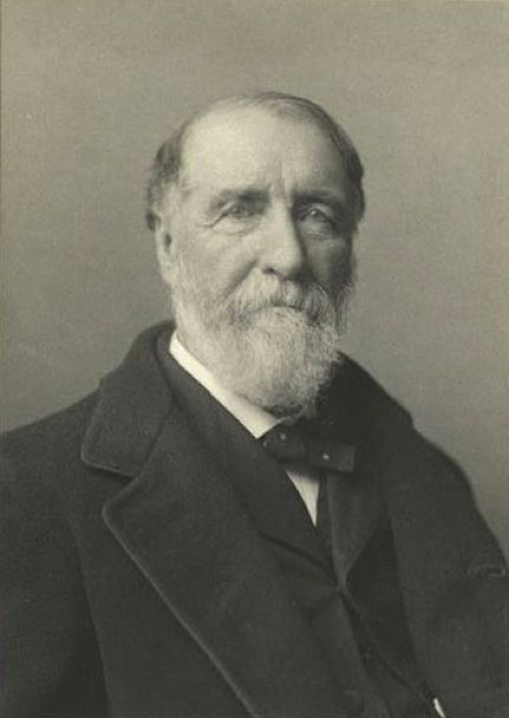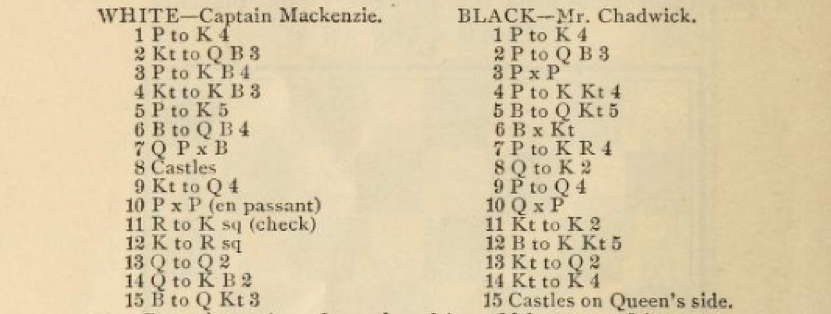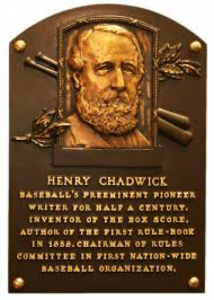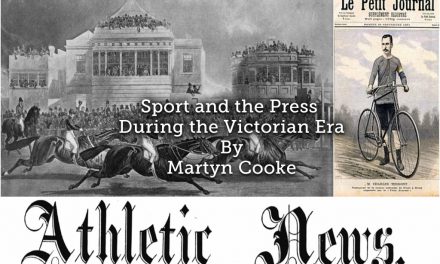Henry Chadwick, the ‘Father of Baseball’, was a pioneer: instrumental in the incipient development of the game, he was also highly influential in the emergence of sport journalism, and although less well acknowledged, was the founding father of sport notational analysis. Whilst it is evident that he believed the analysis of players to be central to developing the game of baseball, his initial motivation to develop his notation system may have been quite different. Several key influences in Chadwick’s life are fundamental in his determination to develop a systematic analysis system for the developing ‘American’ game. Firstly, Henry Chadwick was a reformer: he came from a family of reformers; his father, James, a newspaper reporter was a staunch supporter of the French Revolution, and considered by many contemporaries, a radical. Whilst perhaps not as radical as his father, Henry’s elder half-brother, Edwin, was also a social reformer of note, working ostensibly on the Poor Laws, and sanitary reform, in England, in the 1840s. Secondly, Henry Chadwick wanted to reform baseball, and came to understand the importance of statistics in pressing his arguments. He recognised that quantification not only provided a method of objectively assessing a player’s ability, it also enabled him promote his reform ideas. According to Tygiel (2000), ‘statistics gave him the ammunition to support the changes he deemed indispensable to popularise the game’. Statistics were the key, and it was Chadwick, who demonstrated the power of quantitative analysis, in providing evidence to support his argument for reform. However, the Chadwick who appreciated the way to reform was through statistics was not Henry; it was Edwin.
- Sir Edwin Chadwick
Edwin Chadwick, a barrister by profession, had been instrumental in working on the 1838 and 1839 reports to the Poor Laws Commission. What is interesting in reading these reports is that although he was pressing for reform, his arguments were lacking; the use of statistics to promote his argument, was not apparent. However, in his 1942 Sanitary Report, the evidence base was very different; statistics were the key inclusion. Hence, between 1839 and 1842, Edwin Chadwick, for some reason, embraced the power of statistics. According to Hanley (2002), Edwin’s change of approach was due to a disagreement with William Alison, a professor of medicine at the University of Edinburgh. In 1840, the sanitary enquiry, previously for England and Wales, was extended to Scotland. Alison objected to the premise of the sanitary enquiry; he, unlike Chadwick, was not an adherent of the view that disease was caused by filth, the so called ‘sanitarian view’. He believed the main determining factor was poverty. Alison held the upper hand in the debate; he was able to support his claims by citing many medical authorities. Chadwick was unable to defend his position. He needed to win the debate, to defeat Alison and his supporters, and to do so he had to provide evidence to support his beliefs. Edwin turned to statistics, and in doing so, was able to present a stronger argument for the sanitarian view: demonstrating that poverty-stricken worker in rural areas had twice the life expectancy of worker in industrial Manchester, despite the latter having double the wages of the former. Chadwick was able to state strongly that poverty was not the main cause of disease, and was able to argue from a more evidenced-based standpoint, that the major factors associated with high levels of mortality were physical circumstances and location. Alison’s argument was seriously derailed. His standpoint was undermined further by the 1842 report on Scottish vital statistics, where the committee presented the case that supported Chadwick’s viewpoint. In attempting to initiate reform, Chadwick had demonstrated unequivocally that statistics were critical in providing an evidence-based argument that was pivotal to his success.
- Edwin Chadwick’s report on the sanitary conditions of the labouring classes in Great Britain
The extent to which Henry’s work in baseball analysis was influenced, or informed, by Edwin’s work, and use of statistics, is open to debate. However, in viewing letters written by Edwin to Henry, one could infer that the brothers remained close, despite their geographical separation. Before embarking for America in the mid-1830s, Henry, then aged twelve, resided for a period under the care of Edwin. It is also evident that Henry and Edwin corresponded regularly by letter, up until Edwin’s death in 1890. Interestingly, some of the letters from Edwin refer to his work on sanitary reform, and include reference to statistics. In one particular correspondence, penned in 1875, he wrote: ‘It seems to be admitted that the founder of sanitary legislation, whose works have reduced the current death rates by a third, and is showing how this may be reduced by one half, may have a monument after he is buried’. His letters also indicate that Edwin was very much aware of Henry’s work in baseball reform. He states, in the same letter: ‘To the Americans whom I meet and who call upon me I mention with pride, the large addition you have made to the health and strength, by a new pleasurable exercise, taken up by an entire nation’.
- Henry Chadwick
The extent of the brother’s correspondences makes it highly likely that Henry’s approach to his reforms in baseball, through his use of statistics, was informed by the work of his elder brother. Henry’s background does not suggest an early engagement with statistics or mathematical method, yet in later life, according to Schiff (2008), statistics became one of Henry’s true passions. In fact, in his early years, prior to developing an interest in the newspaper business, Chadwick was a teacher and writer of music. Whilst this perhaps highlights that initially his interests were more related to the arts, it does provide an insight into his later work on the development of his method of data collection: the use of ideographic notations.
There are a number of instances in Chadwick’s life where he would have been exposed to different types of notation. Firstly, as a musician and composer, he would be very familiar with music notation. Secondly, as a journalist, shorthand would be a familiar tool. Indeed, in his early articles, Chadwick constantly referred to his baseball notations as ‘shorthand’, as has been evidenced by his discussion in the July 1888 edition of Outing. Given the period and its popularity in America, the likelihood is that Chadwick would have employed Pitman shorthand. This method is interesting, since it is an orthography using graphemes, or written symbols, similar to the approach adopted by Chadwick in his initial notation design for baseball. Chadwick was also a keen chess player, writing books on the game, including, De Witt’s American Chess Manual (1880), The Game of Chess (1895), and How to Learn to Play the Game of Chess (1905). In the 1895 publication, he presents a full game notation of his victory over the celebrated chess expert, Captain Mackenzie. What is striking is that the baseball notation designed by Chadwick is also remarkably similar to his chess notation method, presented in his 1895 book.
- Chess notation by Henry Chadwick (1895)
Whilst earlier chess notations may have influenced Chadwick’s design for his baseball notation, alongside his familiarity with journalistic shorthand, it is clear that the concept of using notation to generate statistical profiles of the game were catalysed by his brother’s social work in Britain. Henry, akin to Edwin, embraced statistics, and in doing so echoed his brother’s success in reform. In recognition of his public service, Edwin received a knighthood, in 1889, the year before his death. Henry, perhaps though achieved a higher, albeit less formal, accolade. In 1938, he was inducted into the Baseball Hall of Fame, and has subsequently achieved the title, ‘The Father of Baseball’. To this, in recognition of his pioneering work in notation and the use of statistical profiling, Henry Chadwick should also be deeded the designation, ‘The Father of Sport Notation’.
- Baseball Hall of Fame citation
Article © Simon Eaves

